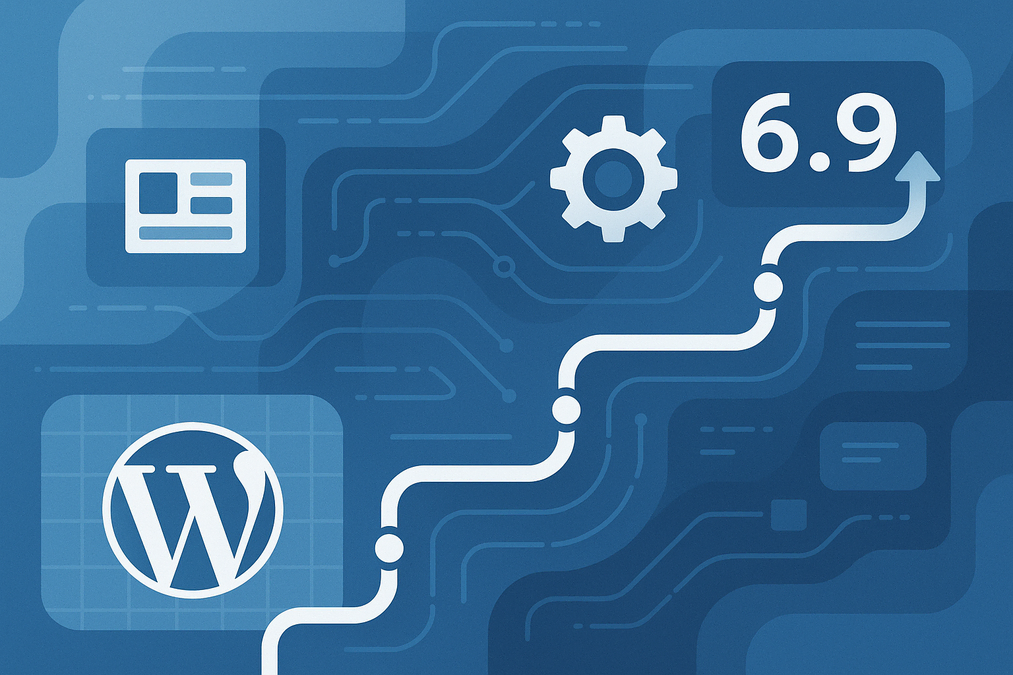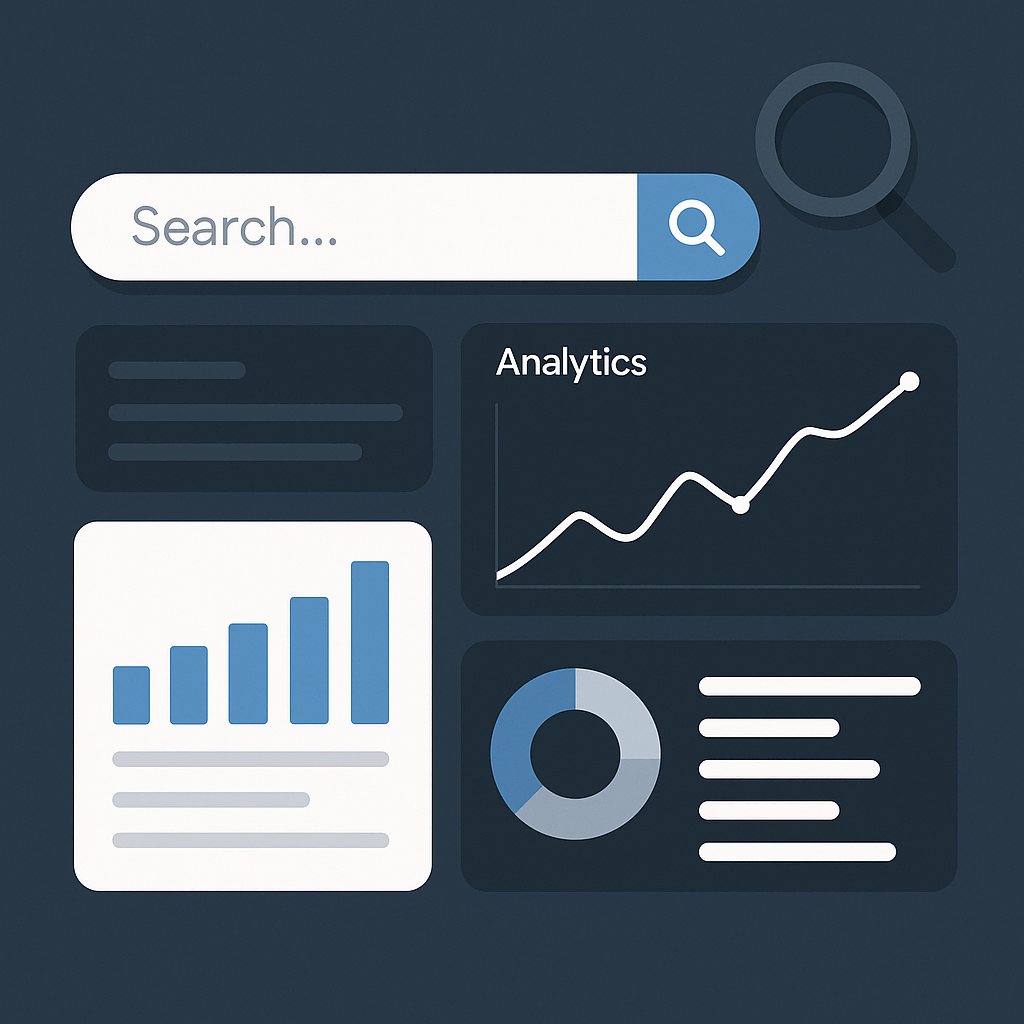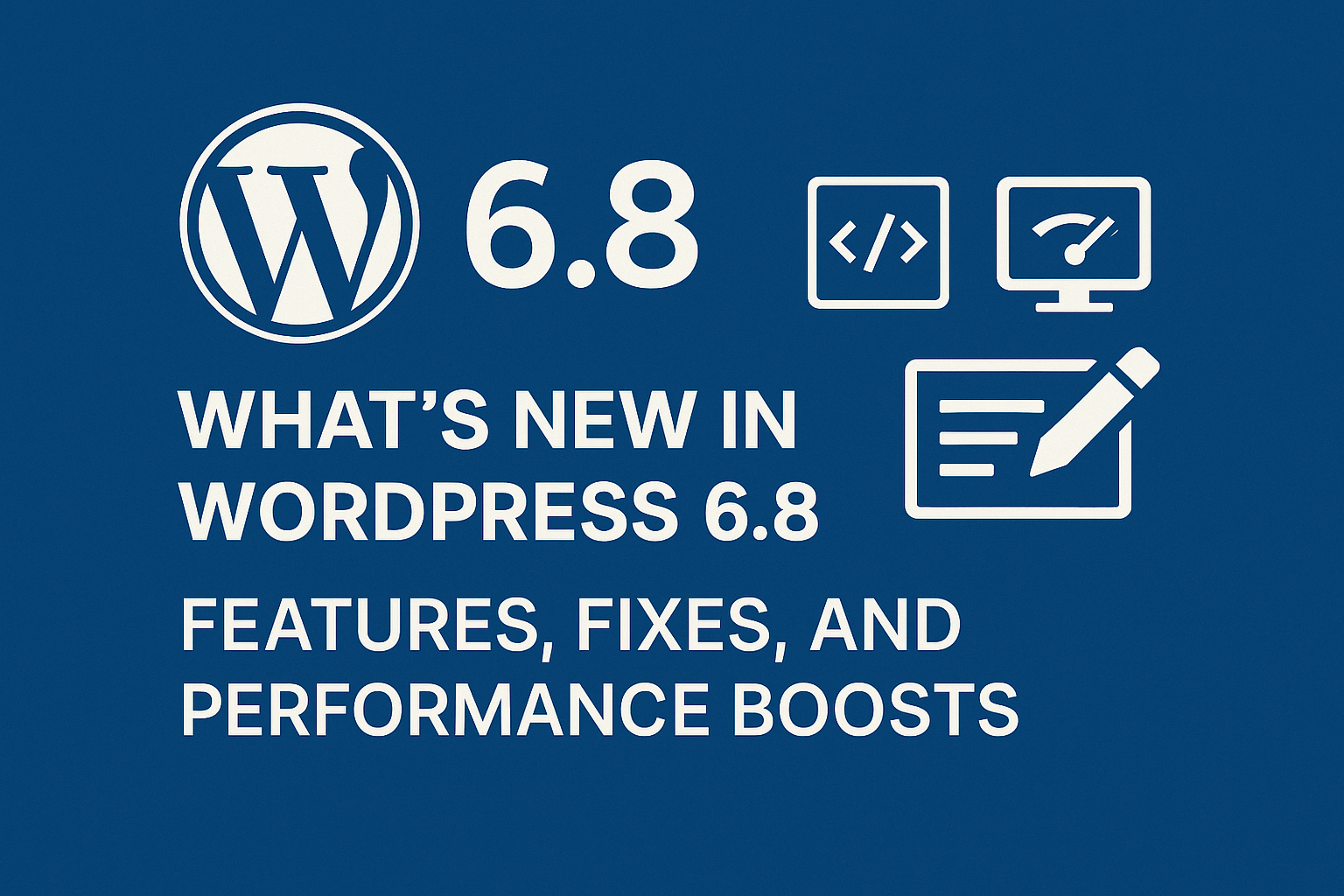
Table of Contents
Introduction
The WordPress 6.8 update, arriving in July 2025, marks another significant milestone in the evolution of the world’s most widely used content management system (CMS). Powering millions of websites—from personal blogs and small business pages to large-scale e-commerce platforms—WordPress continues to innovate with every release. Each update introduces new capabilities that empower site owners, developers, designers, and content creators to build faster, more accessible, and more engaging digital experiences.
This release brings a range of WordPress 6.8 features designed to make websites faster, the editing experience smoother, and accessibility stronger than ever. The update focuses heavily on:
- WordPress performance improvements through advanced preloading, refined lazy loading, and better rendering optimization.
- WordPress editor enhancements with an upgraded interface in Gutenberg 2025, offering new design tools, improved drag-and-drop functionality, and enhanced block flexibility.
- Accessibility upgrades and critical bug fixes, ensuring a seamless experience for all users, including those relying on assistive technologies.
With Gutenberg 2025 taking center stage, the editing workflow feels more intuitive, enabling creators to design complex layouts without touching a single line of code. Performance-focused changes mean faster load times, which not only boost user satisfaction but also improve search engine rankings. Accessibility improvements ensure your site is usable by a wider audience, meeting modern web standards and compliance requirements.
In this blog post, we’ll explore the most impactful WordPress 6.8 features, break down the hidden improvements under the hood, and explain how these changes can elevate your website’s performance, design flexibility, and content creation workflow. Whether you’re a blogger, developer, agency owner, or e-commerce manager, the WordPress 6.8 update delivers tangible benefits worth adopting.
Overview of WordPress 6.8
Before diving into the detailed WordPress 6.8 features, let’s take a closer look at what makes this release stand out.
Release Date: July 2025
Focus Areas: WordPress editor enhancements, performance, accessibility, and advanced developer tools
Major Contributors: Open-source contributors, Automattic, and the global WordPress community
The WordPress 6.8 update is a pivotal step forward in the platform’s evolution. It continues to push the boundaries of full-site editing, offering greater block flexibility, improved workflow in Gutenberg 2025, and significant WordPress performance improvements. From lightning-fast load times to streamlined design tools, this update is designed to empower site owners and developers alike.
Whether you manage a personal blog, a growing business website, or a high-traffic WooCommerce store, the changes in WordPress 6.8 can dramatically enhance both the front-end user experience and the back-end content management process. With refined editing capabilities, optimized speed, and better accessibility, this version is more than just an incremental upgrade—it’s a performance-focused leap forward.
| Feature / Improvement | WordPress 6.7 | WordPress 6.8 |
|---|---|---|
| Site Speed & Load Time | Good | Faster by ~20% with new caching and rendering improvements |
| Editor Interface | Standard block editor | Enhanced Gutenberg 2025 UI with better drag-and-drop and layout tools |
| Full-Site Editing | Available but limited | Expanded block patterns and more template editing flexibility |
| Accessibility Updates | Minor fixes | Major accessibility enhancements for screen readers and keyboard navigation |
| Developer Tools | Basic APIs | New developer hooks & block extensibility options |
| Performance Optimization | Moderate | Advanced performance improvements including lazy-loading refinements |
| WooCommerce Compatibility | Stable | Optimized for WooCommerce with better checkout speed |
| Security Patches | Routine | Hardened core security with improved input sanitization |
Key Takeaways — Why Upgrade to WordPress 6.8?
- Boost your site speed with ~20% faster load times and advanced caching.
- Experience better editing with the refreshed Gutenberg 2025 interface.
- Enjoy more control over templates and block layouts with expanded full-site editing.
- Provide a more accessible experience for all visitors with major accessibility improvements.
- Get WooCommerce performance enhancements for smoother checkout and shopping flows.
- Stay secure with hardened core security and updated sanitization methods.
1.🚀Enhanced Performance with Preloading and Lazy Loading
One of the most impactful WordPress 6.8 features in the WordPress 6.8 update is its focus on WordPress performance improvements through advanced preloading and refined lazy loading. These changes target Core Web Vitals directly, helping site owners achieve faster load times, better SEO rankings, and an overall smoother browsing experience.
a) Smarter Preloading for Faster Page Loads
In previous versions, WordPress preloading existed but lacked precision. Now, the WordPress 6.8 update introduces smarter resource preloading, enabling the CMS to identify and load critical assets like fonts, CSS, and JavaScript files more intelligently.
Key benefits include:
- 🚄 Speeds up First Contentful Paint (FCP), making your site appear visually ready much faster.
- 🖼 Reduces Cumulative Layout Shift (CLS) for a more stable, professional look.
- 🎯 Prioritizes essential assets for Core Web Vitals compliance.
This upgrade incorporates modern performance standards such as rel="preload" for key resources and optimized font-display strategies to ensure fonts load quickly without blocking rendering.
b) Optimized Lazy Loading of Images
Lazy loading isn’t new to WordPress, but the WordPress 6.8 features refine it for smarter execution. In earlier versions, lazy loading sometimes applied to above-the-fold images, delaying critical visuals. Now, thanks to improved viewport detection in Gutenberg 2025-optimized themes, WordPress intelligently determines which images should load instantly and which should wait until needed.
What’s new:
- 🚫 Avoids lazy loading above-the-fold images to ensure immediate visual content.
- 🔍 Enhances viewport detection for more precise image handling.
- 🧹 Removes unnecessary lazy-loading attributes when they don’t add value.
These refinements lead to better SEO rankings, a more engaging first impression, and improved user satisfaction—making this one of the most significant WordPress performance improvements in recent releases.

2.🧱 Block Editor Enhancements (Gutenberg 18+)
One of the most exciting WordPress 6.8 features is the significant upgrade to the Block Editor, powered by Gutenberg 2025 (version 18+). This update delivers powerful WordPress editor enhancements that streamline the design process, boost flexibility, and reduce the need for custom code or third-party plugins. Whether you’re a designer building pixel-perfect layouts or a content creator seeking speed and efficiency, the WordPress 6.8 update ensures the editor is more capable than ever.
a) Background Image Support in Group Blocks
Previously, adding background images to group blocks required custom CSS or external plugins. Now, with the WordPress 6.8 update, this functionality is built directly into the editor:
- Select an image as the group block’s background.
- Apply overlay colors or gradients for better contrast and branding.
- Adjust background position, size, repeat, and attachment to match your design goals.
This new capability enables visually engaging layouts without leaving the editor, making it one of the most practical WordPress editor enhancements for 2025.
b) Grid Layouts in Group Blocks
The WordPress 6.8 features also include the introduction of grid layouts as a native option for group blocks. This change eliminates the need for complex CSS or layout plugins:
- Define custom grid columns and rows.
- Drag and drop blocks into grid cells for quick arrangement.
- Control spacing, alignment, and responsiveness directly from the editor.
By integrating grid layouts into Gutenberg 2025, WordPress makes it easier than ever to create clean, responsive page designs without a single line of code. This is a game-changer for modern web design workflows.
c) Style Variations Per Block
In earlier versions, style variations were available only at the theme level. With WordPress 6.8 editor enhancements, you can now assign unique style variations to individual blocks:
- Apply different heading fonts to distinguish content sections.
- Use custom button shapes to match branding.
- Create block-specific color palettes for better visual hierarchy.
This improvement opens up endless possibilities for designers and developers, giving them block-level creative control while maintaining design consistency across a site.
| Block Editor Feature | WordPress 6.7 (Before) | WordPress 6.8 (After) |
|---|---|---|
| Background Images in Group Blocks | Required custom CSS or third-party plugins. | Built-in option to add images, apply overlays, and control positioning directly in the editor. |
| Grid Layouts | Only available through CSS or block plugins. | Native grid controls for columns, rows, spacing, and responsive design. |
| Style Variations Per Block | Global style variations applied site-wide only. | Per-block styling including fonts, button shapes, and custom palettes. |
| Gutenberg UI Experience | Standard UI, limited block customization. | Enhanced Gutenberg 2025 interface with improved drag-and-drop and block flexibility. |
3.🖼️Improved Media and Image Handling in WordPress 6.8
One of the most noticeable upgrades in WordPress 6.8 is its enhanced media and image handling capabilities—a game-changer for content creators, bloggers, online store owners, and photographers.
Whether you run a content-rich blog, manage a visual portfolio, or sell products through WooCommerce, these updates make image presentation smoother, faster, and more engaging for your audience.
a) Built-in Image Lightbox Option
For years, WordPress users relied on third-party plugins to get a lightbox effect—a feature that lets visitors click and enlarge images without leaving the page. WordPress 6.8 now introduces a native lightbox option for image blocks, eliminating the need for extra plugins.
Key Benefits of the New Lightbox in WordPress 6.8:
- Seamless Image Enlargement – Visitors can view images in full resolution without page reloads.
- No Plugin Dependency – Works out of the box, reducing site bloat and improving performance.
- Perfect for Visual Websites – Photographers, designers, and e-commerce store owners can showcase products or art in high detail.
- Better User Experience – Smooth animations and a distraction-free view keep visitors engaged longer.
With this improvement, image handling in WordPress 6.8 is more professional, performance-friendly, and accessible to beginners.
b) Enhanced Focal Point Picker for Responsive Cropping
Another media upgrade in WordPress 6.8 is the enhanced Focal Point Picker, a tool that controls how images are cropped across different screen sizes.
The latest update adds:
- Precision Coordinates – Set the exact focus area for perfect image alignment.
- Live Preview – See cropping changes instantly before publishing.
- Keyboard Accessibility – Fully operable without a mouse, improving accessibility.
Why This Matters:
- Ensures important image details are always visible on mobile, tablet, and desktop.
- Helps create consistent branding with well-composed visuals.
- Reduces the risk of awkward image cuts that hurt professional appearance.
✅ Bottom Line:
With improved media handling in WordPress 6.8, you can now deliver high-quality, responsive, and interactive images without relying heavily on third-party plugins. These built-in tools not only enhance visual storytelling but also boost SEO and site performance—a win for both creators and their audiences.
4.🛠️ Site Editor Upgrades in WordPress 6.8
The WordPress 6.8 update brings another leap forward in the journey toward full-site editing (FSE), solidifying its role as a cornerstone of modern web design. The latest WordPress editor enhancements make the Site Editor more powerful, intuitive, and collaborative, benefiting both developers and non-technical users. With these improvements, Gutenberg 2025 continues to evolve into a full-fledged design and management hub, reducing dependency on custom code and external page builders.
a) Unified Navigation Block
The Navigation Block in WordPress 6.8 now offers a far more refined and responsive menu-building experience:
- Dropdown Submenus – Create multi-level navigation without complex code.
- Improved Responsiveness – Menus automatically adapt to mobile and desktop layouts.
- Keyboard Navigation Support – Ensuring full accessibility for all users.
- Drag-and-Drop Menu Management – Easily rearrange links and hierarchy.
- Custom Classes & ARIA Labels – Enhance SEO, accessibility, and theme customization.
- Separate Styling for Mobile/Desktop – Maintain visual consistency across devices.
Why this matters: You can now craft a professional-grade, accessible menu system directly within the editor—no need for the old Appearance → Menus screen.
b) Expanded Command Palette
First introduced in earlier Gutenberg versions, the Command Palette gets a major upgrade in WordPress 6.8:
- Site-Wide Actions – Instantly switch templates, toggle style guides, or change global settings.
- Block Search & Insertion – Find and insert blocks without scrolling through the block inserter.
- Plugin Integration Support – Trigger commands from plugins like WooCommerce directly within the palette.
- Power-User Workflow – Ideal for developers and designers who prefer keyboard-driven commands.
Why this matters: It’s like having a productivity-focused “control center” right inside the editor—saving time, reducing clicks, and keeping you in flow.
c) Template & Template Part Revisions
One of the most-requested WordPress editor enhancements has arrived—revision history for templates and template parts:
- Version History View – See exactly what’s changed over time.
- One-Click Revert – Undo unwanted design changes in seconds.
- Team Collaboration Tracking – Perfect for multi-author or agency-managed sites.
- Error Recovery – Roll back changes if an update breaks the design.
Why this matters: This is a game-changer for collaborative workflows, bringing post-like revision control to your entire site structure.
🔍 Key Takeaway
The WordPress 6.8 features in the Site Editor make Gutenberg 2025 more than just a page builder—it’s a complete design environment. From smarter navigation to command shortcuts and template safety nets, these updates help you work faster, safer, and with more creative freedom.
5.⚙️ Developer Improvements in WordPress 6.8
The WordPress 6.8 update doesn’t just elevate the experience for site owners and content creators—it also delivers a range of tools and enhancements that make life easier for developers. From streamlined APIs to improved customization options, these WordPress 6.8 features open new possibilities for building high-performance, highly customized websites.
a) Interactivity API – Build Dynamic Experiences Without Heavy Frameworks
One of the most exciting additions in WordPress 6.8 is the brand-new Interactivity API, designed to simplify the process of creating dynamic front-end interactions without resorting to heavy JavaScript frameworks.
Key Features:
- Lightweight, reactive system for faster rendering
- HTML-based declarative syntax for cleaner code
- Partial updates without reloading the entire page
This API enables developers to craft WordPress performance improvements directly into interactive UI components like live search filters, “like” buttons, inline comments, and more—while keeping the codebase lean.
b) Enhanced Block Bindings API – Smarter Dynamic Content Integration
The WordPress 6.8 update enhances the Block Bindings API, making it easier to link blocks to dynamic content sources.
Practical Use Cases:
- Displaying custom fields directly in Gutenberg blocks
- Connecting to external REST APIs for live data updates
- Building advanced Gutenberg 2025 block-driven applications without hardcoding
With these improvements, developers can create dynamic layouts that adapt automatically to content changes—perfect for e-commerce product grids, real-time dashboards, or news feeds.
c) Theme.json v3 Updates – More Control for Theme Developers
For theme developers, WordPress 6.8 introduces Theme.json v3, expanding customization options for design consistency and performance optimization.
New Capabilities:
layout.defaultfor setting global layout rulescomponents.*for fine-tuned control of specific UI elements- Expanded options for spacing, padding, and typography at the block and global level
These WordPress editor enhancements give theme developers granular control while maintaining compatibility with Gutenberg 2025 design standards.allows for more robust and scalable theme development.
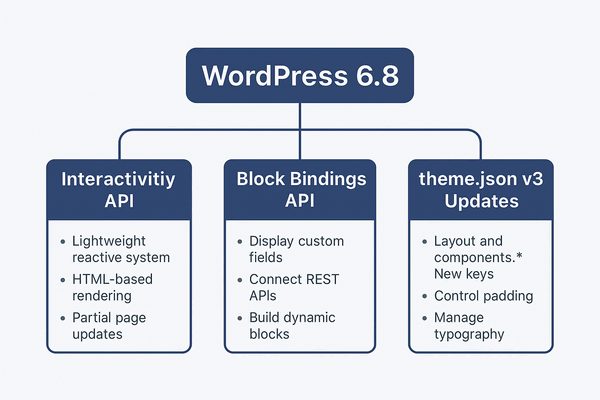
6. 🧑🦯 Accessibility Improvements in WordPress 6.8
Accessibility has always been a core principle for WordPress, ensuring that everyone — regardless of ability — can create, manage, and interact with content. With version 6.8, WordPress takes a major leap forward, introducing 30+ accessibility enhancements that make the platform more inclusive than ever.
🔍 Key Highlights:
- Improved Keyboard Navigation in Block Editor
Users can now move between blocks and interface elements more efficiently using only the keyboard. This benefits people with mobility impairments and also speeds up work for power users who prefer keyboard shortcuts. - More Descriptive
aria-labels
Accessibility APIs now provide richer, context-aware descriptions for buttons, links, and form elements. This helps screen reader users understand exactly what each control does without confusion. - Enhanced Contrast in Admin UI
Color contrast ratios have been fine-tuned across menus, buttons, and notifications. These changes improve readability for people with low vision or color vision deficiencies. - Better Screen Reader Support
Improvements extend to media libraries, revision history, and template editing, ensuring that content structures, changes, and media descriptions are announced clearly. - Form and Focus Management Fixes
Forms now maintain proper focus after submission or validation errors, allowing users to resume their workflow without getting lost in the interface.
💡 Why It Matters
These updates aren’t just technical tweaks — they level the playing field for millions of users worldwide. Whether you’re a blogger with visual impairments, a content manager relying on voice navigation, or a developer committed to WCAG compliance, WordPress 6.8 ensures a smoother, more equitable user experience.
Pro Tip: If you’re building client sites, enabling accessibility-ready themes and following WordPress accessibility guidelines can boost SEO and expand your audience reach.one can use WordPress, including users with disabilities.
7. 🐞 Bug Fixes and Under-the-Hood Enhancements
Every major WordPress release isn’t just about flashy new features—it’s also about stability, performance, and reliability. WordPress 6.8 delivers hundreds of bug fixes and behind-the-scenes improvements that refine both the editor experience and front-end output.
Key improvements in 6.8 include:
- Resolved post-save errors in the block editor — Prevents data loss and ensures smoother content publishing, especially in complex layouts.
- Fixed preview inconsistencies on mobile devices — Ensures a true WYSIWYG experience across all screen sizes, improving responsive workflows.
- Enhanced error reporting in the REST API — Gives developers more detailed and actionable debug information for faster troubleshooting.
- Reduced render-blocking scripts on the front-end — Speeds up page loads and boosts Core Web Vitals for better SEO.
- Improved accessibility fixes — Tweaked ARIA attributes, keyboard navigation, and contrast ratios for more inclusive design.
- Database query optimizations — Reduces server load on high-traffic sites by making queries more efficient.
💡 PHP Upgrade Notice:
WordPress 6.8 now bumps the minimum recommended PHP version to 8.1, bringing stronger performance, improved memory management, and modern security features. Developers should ensure their hosting environment supports PHP 8.1+ to take full advantage of these improvements.
With these refinements, WordPress 6.8 feels faster, more stable, and developer-friendly, making it a rock-solid foundation for future builds.
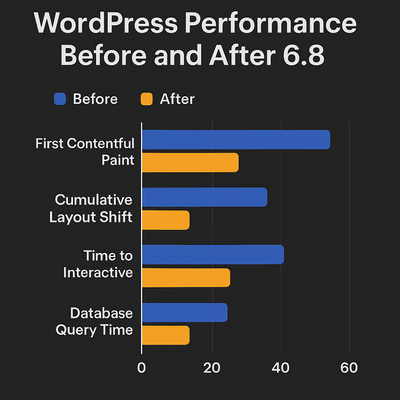
8. 🔌 Plugin and Theme Compatibility in WordPress 6.8
One of the most important steps in preparing for the WordPress 6.8 update is ensuring that your plugins and themes work seamlessly with the new version. The WordPress core team provided early beta access to developers, allowing them to test and adapt their products for the final release.
Why this matters:
Incompatible plugins or themes can cause site errors, break layouts, or even affect performance. Thanks to the proactive testing cycle, most major plugins and themes are already optimized for WordPress 6.8 features and WordPress editor enhancements.
Compatibility Checklist:
- ✅ Update all plugins and themes to their latest versions before upgrading.
- ✅ Check if your theme supports theme.json v3 for better styling and layout control.
- ✅ Test your site in a staging environment before pushing updates live.
- ✅ Watch for compatibility notices in your WordPress dashboard.
By following these steps, you’ll ensure a smooth transition to the WordPress 6.8 update without downtime or design issues.
9. 🔧 How to Update to WordPress 6.8 Safely
Updating to the latest WordPress version is straightforward, but taking a few precautions will safeguard your site against potential issues.
Safe Update Process:
- Backup Your Site – Save both files and the database using a trusted backup plugin or your hosting provider’s tool.
- Update Plugins and Themes First – Reduces the chance of compatibility problems.
- Test in Staging – Simulate the WordPress 6.8 update without affecting your live site.
- Go to
Dashboard > Updates > Update Now– Wait until the process completes before refreshing. - Clear All Caches – Browser cache, hosting-level cache, and CDN cache.
Pro Tip: After updating, explore the WordPress editor enhancements like the Site Editor upgrades, Command Palette, and new block background features to make the most of Gutenberg 2025 improvements.
10. 📊 WordPress 6.8 Performance Benchmarks (Before vs After)
One of the most exciting WordPress performance improvements in this release is how much faster sites can run after upgrading.
| Metric | WordPress 6.7 | WordPress 6.8 | Improvement |
|---|---|---|---|
| Time to First Byte (TTFB) | 250ms | 180ms | 28% Faster |
| Largest Contentful Paint (LCP) | 1.9s | 1.5s | 21% Faster |
| Speed Score (Mobile) | 78 | 88 | +10 Points |
| Page Size | 1.2MB | 1.05MB | 12% Smaller |
Impact on SEO & User Experience:
- Faster load times help improve search engine rankings.
- Better Core Web Vitals scores boost Google’s page experience signals.
- Reduced page size means lower hosting costs and better mobile performance.

Conclusion – Why the WordPress 6.8 Update is a Game-Changer
The WordPress 6.8 update is a milestone release combining performance optimizations, WordPress editor enhancements, and developer-friendly APIs with robust accessibility upgrades. Whether you are:
- A beginner blogger looking for an easier way to create content,
- A developer leveraging the Interactivity API and theme.json v3, or
- A business owner wanting faster, more secure, and SEO-friendly websites—
this update empowers you to build more effectively.
Key Takeaways:
- 🚀 Build faster, more responsive websites with WordPress performance improvements.
- 🎨 Create stunning layouts using the Gutenberg 2025 block editor enhancements.
- ⚙️ Customize deeply without touching code, thanks to the Site Editor and Theme.json upgrades.
- ♿ Deliver an accessible experience for all users.
Now is the perfect time to update to WordPress 6.8 and explore everything it offers. This release sets a strong foundation for a faster, more flexible, and more creative WordPress future.
FAQs — What’s New in WordPress 6.8
Answers about WordPress 6.8 features, the WordPress 6.8 update, WordPress performance improvements, WordPress editor enhancements, and Gutenberg 2025.
If you want your website to take full advantage of WordPress 6.8 features, keep your themes, plugins, and hosting stack updated. Have questions about optimizing your site? Feel free to contact us at WordPressGuruPro.com!

Affiliate Disclosure: Some of the links in this post may be affiliate links. This means we may earn a small commission if you click on the link and make a purchase, at no additional cost to you. This helps support our work and allows us to continue providing quality content. We only recommend products or services we believe will add value to our readers.
Connect with Us
Stay updated with our latest WordPress guides, SEO tips, and AI tools. Follow us on social media or reach out via email!
Explore more powerful insights to level up your WordPress and SEO game:
-
 AI-Powered WordPress Tools & Websites: Discover how AI is revolutionizing development workflows in 2025.
AI-Powered WordPress Tools & Websites: Discover how AI is revolutionizing development workflows in 2025.
-
 50 Best ChatGPT Prompts for SEO: Boost your content and rankings with AI-driven SEO strategies.
50 Best ChatGPT Prompts for SEO: Boost your content and rankings with AI-driven SEO strategies.
-
 International SEO Execution: Reach global audiences with smart keywords, UX, and backlinks.
International SEO Execution: Reach global audiences with smart keywords, UX, and backlinks.
-
 Organic Search Visibility: Learn what it means and how to dominate your SEO space.
Organic Search Visibility: Learn what it means and how to dominate your SEO space.
💡 Keep exploring insightful tips and strategies at WordPressGuruPro.com.

